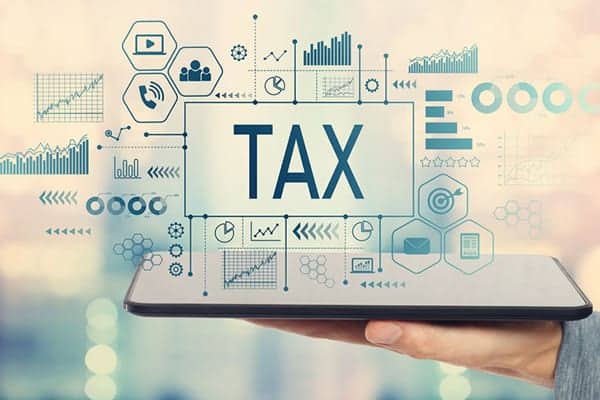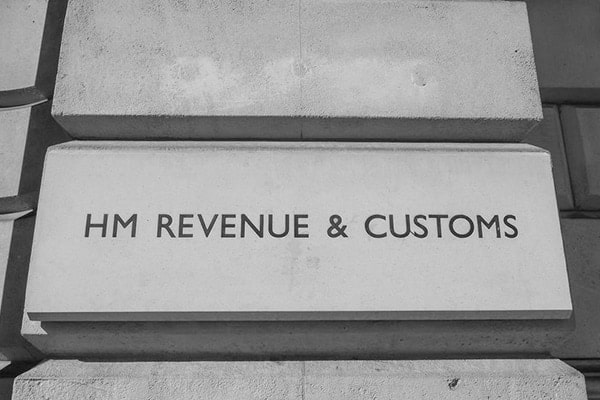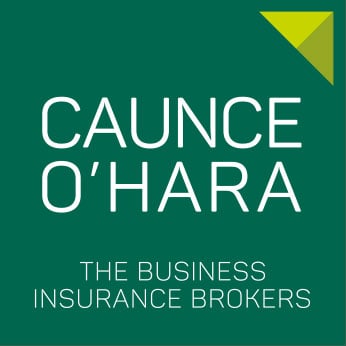
What are the changes to self-employed tax and how will they affect you?
Posted on 24th September 2020 by Katherine Ducie
The government has recently announced that a number of changes will be made to the way self-employed individuals pay their tax, from extending Making Tax Digital (MTD) to the reform of the tax return.
This comes alongside announcing that several consultations will be conducted, including a consultation by the Treasury Select Committee on Tax After Coronavirus.
The chancellor has suggested that he is looking at a rise in NICs for sole traders which comes with speculation that dividend rates could be changing.
Legislation Day took place on the 23rd of July 2020, with a raft of consultations being announced by the government as part of their vision and roadmap for the next 10 years.
In their published 10-year strategy of changes to the tax system, the government outline their plans for ‘building a trusted, modern tax administration system’, fit for the challenges of the 21st century.
We’ve collated an overview of what was announced and what you can expect from the government in the near future.
Some of their most significant changes mentioned include:
- IR35 implementation from April 2021
- a clampdown on tax avoidance schemes
- more regular reporting and payment of your tax
- keeping your taxes on a cloud-based accounting system
- an estimate of your end of the year tax liability provided by HMRC
- all VAT registered businesses becoming MTD compliant from April 2022 for their VAT obligations
- self-employed businesses and landlords, with a business income of over £10,000 per annum, becoming MTD compliant from April 2023.
Making Tax Digital (MTD)
The government say that tax digitisation will make it more effective and easier for both HMRC and taxpayers to get tax right.
It will bring the UK tax system up to the standard of other digital leading economies, like Finland and Denmark, who already use digital tax reporting.
A digital reporting system will also give HMRC a clearer understanding of what people are earning.
Since April 2019, VAT-registered businesses with a turnover above the VAT threshold of £85,000 have been required to digitally keep their VAT records and submit their VAT returns using HMRC’s electronic software. This change was the initial step of what will be a wider digital reform.
Currently for any businesses below this threshold, keeping your VAT records and submitting your returns digitally is optional.
This will change from April 2022 when all VAT-registered businesses will be required to follow the rules of Making Tax Digital for their VAT obligations.
From April 2023, self-employed businesses and landlords with a business income of over £10,000 will also be required to follow the Making Tax Digital rules.
The government are reassuring businesses who do not have reliable access to the internet that they will not face an added burden. Where businesses cannot go digital, they won’t be expected to do so.
The Making Tax Digital service is currently being tested by businesses, whose feedback is being used to develop the software further.
The government will be consulting later this year on the design of what the Making Tax Digital system will look like for corporation tax.
To find out what you need to know for being MTD compliant, read the Help and support for Making Tax Digital guide on Gov.uk.

More frequent tax reporting and payments
In their plans, the government mention the introduction of real-time reporting and payment of tax.
The government are open to views and aim to publish a call for evidence to discover the most appropriate timings and frequency of tax payments.
They would also like to hear ideas on how to make it easier for those who would like to pay their tax bill more regularly, on a voluntary basis, to do so.
In their report, the government say: “The Income Tax Self-Assessment system is the most significant example of a delay between the point of taxable income and the point of tax payment.”
Where PAYE employees have their tax deducted monthly or weekly at source by their employer, self-employed individuals, like freelancers and contractors, pay their tax bill in two or three payments, with the first payment due 10 months into the tax year.
HMRC say the delays in paying tax ‘create numerous challenges both for taxpayers and HMRC [1].’
They discuss how a delay in tax payments can make it hard for some self-employed people to manage their money efficiently, especially those who are newly self-employed and, in some cases, receive their first tax bill up to 22 months after they began trading. This lump payment can cause some taxpayers to obtain loans and build up debt.
The government mention that the real-time payments could work both ways, saying: “In time of crisis, the flow can work in the opposite direction, with targeted government support paid directly and in real-time to businesses and self-employed individuals [1].”
Get here for a quick online freelance insurance quote today
Modernising the tax administration framework
The tax administration framework refers to ‘the set of laws, regulations, processes and guidance that allow HMRC to administer the tax system’.
The tax administration system, which in some areas is over 50 years old and challenging to navigate, is in the plan to be improved.
The government are in the process of ‘exploring the options’ for a modernised framework which provides targeted support for taxpayers, is simpler and is more transparent.
Ideas to improve tax administration mentioned so far include:
- Simplified registration which mean businesses would only need to register once with HRMC for all their taxes. This would avoid the need to use multiple rules, processes and deadlines for different taxes.
- More intelligent use of data on taxpayers to provide pre-populated tax returns.
Concerns with the tax changes
Andy Chamberlain, Director of Policy at IPSE (the Association of Independent Professionals and the Self-Employed) said on the matter: “In pushing ahead with Making Tax Digital, the government must make sure it does not make tax even more complex for freelancers.
“In the plans for extending MTD, the government announced that it would consider making tax reporting more frequent.
“Although this would give the government a more accurate view of incomes, for freelancers, for whom every minute of admin is valuable earning time lost, this could be a significant added burden.
“The aim of MTD is to make tax simpler for taxpayers and HMRC: it’s not clear to us how more frequent reporting will achieve this.”
The association also mentioned concerns over the turnover threshold of the new tax system being as low as £10,000, due to the possibility of it disincentivising those setting up innovative freelance ‘side hustles’.
This is because of the need to buy and use new software, amounting to extra time and money.
Anticipated positives of Making Tax Digital
HMRC believe that with more real-time information and digital recording, it will be harder for rule breaking and tax avoidance to take place.
They also believe that businesses will benefit from the new system in a number of ways.
Firstly, by allowing businesses better data analysis of company performance and secondly by providing greater chances of improved profitability and productivity.
This idea is supported by evidence that suggests most digital savvy businesses save as much as a day per week in administration.
Another benefit for self-employed people will include easier access to support from HMRC via digital channels like webchat.
Clampdown on tax avoidance schemes
Two new consultations will be conducted, looking into tackling disguised remuneration tax avoidance schemes, beyond the government’s planned approach.
A call for evidence will ask for views and look at ways to tackle future use of disguised remuneration tax avoidance.
It will also look into why people choose to use disguised remuneration schemes and whether there are any other types of disguised renumeration schemes not already covered by the loan charge.
The second consultation will ask for views on suggestions to tackle promoters of tax avoidance schemes and strengthen the sanctions against promoters.
Capital gains tax review
The chancellor has asked the Office of Tax Simplification (OTS) to carry out a broad review of Capital Gains Tax to identify simplification opportunities for individuals and smaller businesses.
This review will be conducted in two parts. The first part will include a call for evidence on high-level views regarding the principles of Capital Gains Tax (CGT).
The second part seeks feedback on the technical detail and practical operation of CGT.
The online survey used to gather evidence will give individuals and businesses the chance to give their thoughts on CGT and offer suggestions for improvements.
What affect will the changes to self-employed tax have on freelancers?
As with most big transitions, a new electronic approach to tax will take some getting used to. Learning the ropes of a new digital system and reporting taxes more regularly might be time consuming for freelancers.
In order to be MTD compliant, freelancers must submit digital records using software that is MTD compatible which could come at an added cost.
Though paying for the software might be costly, it may come with some other useful features that will help to easily generate invoices and get a clearer summary of your financials.
The government have mentioned that there are MTD compatible solutions available for free, depending on the size and complexity of your business.
For small businesses who might have registered voluntarily for VAT to receive VAT refunds, or to give the impression of being a larger business, they will need to start planning now for the MTD April 2022 extension.
Some businesses may consider deregistering instead of facing the extra burden of being MTD compliant. In some cases, deregistration can cause a VAT cost because of the rules on assets so it’s worth considering all options available.
Currently MTD has a penalty system for those who do not comply however it is unclear whether this model will be applied to the MTD extensions in 2022 and 2023. A call for evidence will help to determine penalties of the future MTD rollouts.
For those who are already required to pay their tax digitally, one penalty point is issued each time a business fails to submit their accounts on time.
When a business reaches a certain threshold of points, HMRC charge a penalty for every submission failure thereafter. The penalty points are not permanent and can be erased after a period of good compliance.
When MTD first became law in 2019, HMRC recognised that businesses and individuals needed time to become familiar with the new requirements.
In the first year HMRC took a light touch approach to penalties by not issuing filing or record keeping penalties’ where businesses were doing their best to comply with MTD.
HMRC may hopefully take this light touch approach again when MTD becomes compulsory to more individuals in 2022 and 2023.
The tax changes will require freelancers to make thorough preparations over the coming months to ensure they are MTD compliant in time for 2022.

You can find out more about Making Tax Digital in our blog post – How to Prepare Your Business for Making Tax Digital.
Let us know your thoughts on the upcoming tax changes by tagging us on Twitter, @CaunceOHara.
If you would like a quote for your business insurance, please call our friendly award-winning team on 0333 321 1403 today or click to get a quick online quote in minutes!
Get here for a quick online freelance insurance quote today
Related articles:
How to Prepare Your Business for Making Tax Digital
5 ways to reduce your tax bill when self-employed
A guide to freelancer expenses
4 reasons why having a Tax Enquiry and Legal Expenses policy is more important than you think
Sources:
https://www.gov.uk/government/publications/tax-administration-strategy/building-a-trusted-modern-tax-administration-system#our-10-year-strategy
https://www.gov.uk/government/publications/making-tax-digital/overview-of-making-tax-digital
https://www.gov.uk/government/consultations/call-for-evidence-tackling-disguised-remuneration-tax-avoidance
https://www.gov.uk/government/consultations/ots-capital-gains-tax-review-call-for-evidence-and-survey
https://www.gov.uk/government/news/making-tax-digital-becomes-law
https://www.ipse.co.uk/ipse-news/ipse-blog/ipse-guide-upcoming-tax-changes-self-employed.html
https://www.ipse.co.uk/ipse-news/news-listing/government-not-tax-more-complex-for-freelancers.html
https://www.legislation.gov.uk/new/2020-07-23
https://www.gov.uk/vat-registration/cancel-registration
https://home.kpmg/uk/en/home/insights/2020/07/tmd-mtd-vat-scope-extended-and-income-tax-start-date-announced.html
https://quickbooks.intuit.com/uk/blog/making-tax-digital-regulations/
Useful Links

Professional Indemnity Insurance
Protects against claims of alleged negligence in your professional services, advice and designs.

Public Liability Insurance
Protects against claims of injury to third-parties or damage to a third-party's property.

Employers' Liability Insurance
A legal requirement for anyone employing staff. Protects your business in-case an employee is injured at work.

Legal Expenses and Tax Investigation Insurance
Cover for contract disputes, tax investigations, court attendance, debt recovery, and more.
